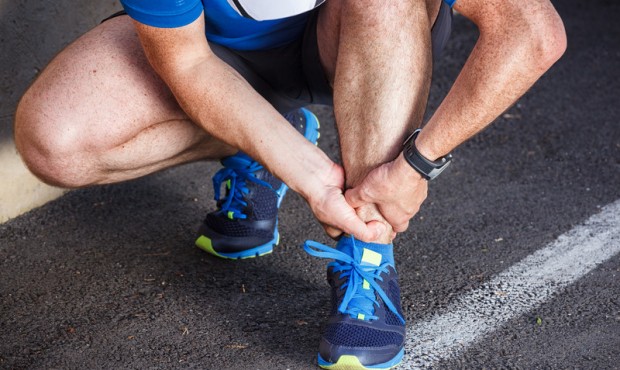Running through pain is a dangerous game
Feb 5, 2015, 7:16 PM | Updated: Feb 6, 2015, 4:50 am

Distance runners have a unique relationship with pain. At times, it’s inevitable to cross the finish line. No pain no gain, right? Wrong. Performing to the point of pain should never be the goal of any activity, but a little soreness usually comes with the territory. Soreness is caused by overloading muscles to the point of recovery, resulting in muscle growth. Pain on the other hand, is sending the body a message to rest and usually lasts more than a few days.
Daniel Aschenbrener, MD, a physician with Banner Orthopedic Surgery Specialists, says an injury, whether it occurs on the field or off, may not always sideline an athlete. However, he cautions against ignoring the signs and symptoms of injury as doing so could ultimately take you out of the game for good. Instead, he says to listen to your body and respond accordingly.
“In the past, it was generally recommended that athletes who suffer any sort of physical injury abstain from playing completely, usually for a prolonged period of time with immobilization to the injured part of the body. While there are definitely times when that approach is still warranted, the general school of thought has shifted somewhat.”
Research has shown that soft tissues, including muscles, tend to heal in response to stress. Therefore, early exercise following a minor injury may help decrease swelling, stiffness and muscle weakness.
“Most minor injuries heal better with a little light exercise and stretching soon after injury. In fact, regularly stretching the tendons produces molecules in the body that help to naturally heal inflammation. Knowing what types of exercises are safe can be a challenge.”
Letting tendonitis go on for a few months builds scar tissue quickly and only make the condition more difficult to heal and more likely to return. Early rehabilitation will help speed up the recovery process and prevent further damage.
It’s also important to remember a personal trainer at the gym knows how to exercise, but most likely has no formal training in rehabilitation. The safest bet is to see a physical therapist. In only a few visits, they can teach you about your injury, give instructions on how to modify activities, provide a home exercise program and send you on your way.
Continuing to workout and exercise while the body is recovering from an injury is not a one- size- fits-all philosophy.
Fractures and other more severe injuries may require casting, immobilization, injections or even surgery. It is important to follow your doctor’s advice about how and when it is safe to return to play.
Recovery from an injury, even a minor one, doesn’t occur overnight. Be patient, modify your workout routine and always listen to your body. If the pain continues or worsens, then medical intervention may be in the future. Until then, walk it off and take a few baby steps.
As always, check with your doctor if you experience soreness that persists for more than two or three days. Back pain accompanied by numbness, tingling, or weakness in the legs is an indication of possible disc injury. Pain radiating down the leg could be potentially dangerous and should be checked by an orthopedic specialist.
To schedule an appointment, please call 855-595-8224 or visit our website at BannerCOREcenter.com
to assess your knee and hip pain with our free online assessment.









Comments